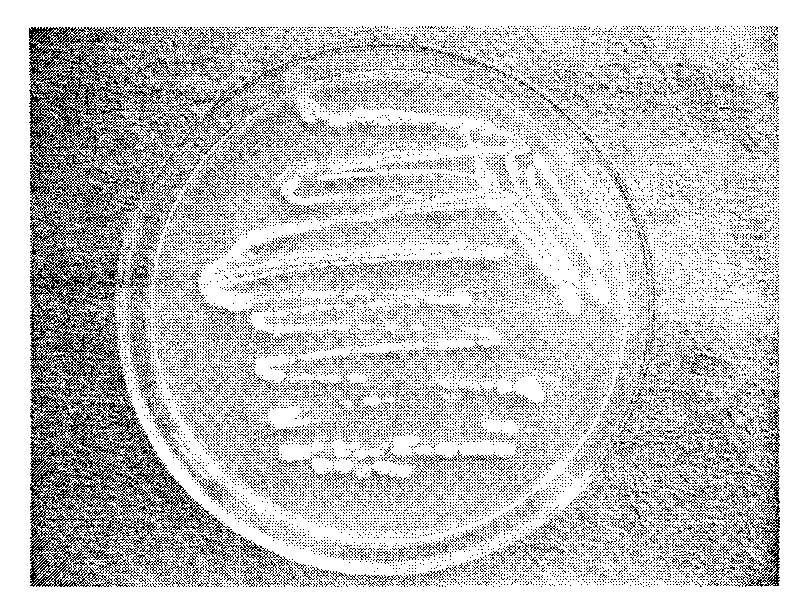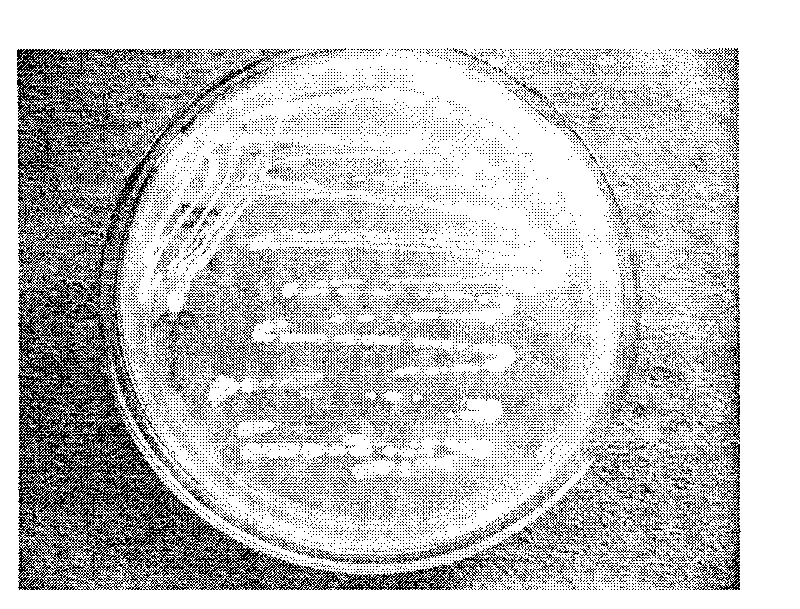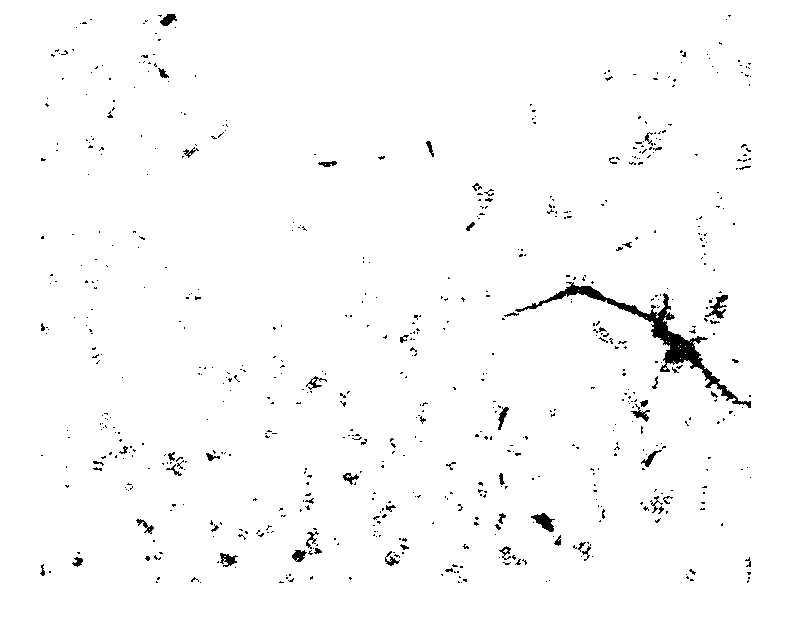Broad-spectrum antifungal plant endophytic bacillus subtillis and application thereof
A technology of Bacillus subtilis and plants, applied in the field of Bacillus subtilis R31, can solve the problems of failure, high similarity between sequences, and inability to effectively distinguish Bacillus subtilis groups, and achieve good antagonistic ability, good control effect, and good plate antagonism active effect
- Summary
- Abstract
- Description
- Claims
- Application Information
AI Technical Summary
Problems solved by technology
Method used
Image
Examples
Embodiment 1
[0026] Example 1: Separation, purification and physical and chemical properties of R31
[0027] (1) Separation, purification and preservation of R31
[0028] Collect healthy two-color dendrobium leaves in the greenhouse of the orchid production base of the Zhuhai Agricultural Science Research Center, rinse them with tap water, dry them and treat them with 75% alcohol for 1 min, then treat them with 5% NaOCl for 5 min, and rinse them with sterile water 4 times; After drying, use sterile scissors and tweezers to cut the leaves into tissue pieces of about 0.2cm×0.5cm, and spread them on NA (beef extract peptone medium) plates containing 50μg / mL cycloheximide; culture at 28°C Observe every day. Once bacteria are found to grow from the incision, they are picked out, purified and cultured on a new NA plate, and stored in the form of bacteria solution with 20% glycerol at -20℃ and -80℃. Then take 200μl of sterile water from the fourth rinse and spread it on the NA plate, do 3 repetitions...
Embodiment 2
[0095] Example 2: Antagonistic test of R31 against different pathogens of Fusarium
[0096] (1) Isolation and purification of different Fusarium pathogens
[0097] Isolation source: Collect typical banana wilt, celery verticillium wilt and dendrobium leaf spot disease tissues in Zhuhai City and surrounding cities, and isolate the pathogen to test the antagonistic activity of R31 against different Fusarium pathogens.
[0098] Separation and purification method: clean the diseased tissue with clean water, blow dry, use a sterile blade to cut the diseased tissue at the junction of disease and health and cut into suitable size, sterilize the surface with 70% alcohol for 30s under aseptic conditions, and then use effective chlorine Treat the 5% NaOCl for 5 minutes, rinse with sterile water 4 times, cut the diseased tissue after surface disinfection with sterile scissors and tweezers into a tissue block of about 0.2cm×0.5cm, dry the surface of the diseased tissue block and place it on Add...
Embodiment 3
[0104] Example 3: The antagonistic activity of R31 against other plant pathogenic fungi, the results are shown in Table 5
[0105] The method for bioassay of antagonistic activity is the same as that of Example 2. Among them, Alternaria, Curvularia lunata, Mango stalk rot, Watermelon wilt, etc. are plant pathogenic fungi donated by Zhuhai True Green Technology Co., Ltd. Rhizoctonia is a plant pathogenic fungus presented by Dr. Yi Runhua from Guangdong Ocean University. The larger the antibacterial band, the stronger the antibacterial effect.
[0106] Table 4 The antagonistic activity of R31 against the pathogenic fungus Fusarium spp. from different hosts
[0107]
[0108] Table 5 Plate antagonistic activity of R31 against several plant pathogenic fungi
[0109]
PUM
 Login to View More
Login to View More Abstract
Description
Claims
Application Information
 Login to View More
Login to View More - R&D
- Intellectual Property
- Life Sciences
- Materials
- Tech Scout
- Unparalleled Data Quality
- Higher Quality Content
- 60% Fewer Hallucinations
Browse by: Latest US Patents, China's latest patents, Technical Efficacy Thesaurus, Application Domain, Technology Topic, Popular Technical Reports.
© 2025 PatSnap. All rights reserved.Legal|Privacy policy|Modern Slavery Act Transparency Statement|Sitemap|About US| Contact US: help@patsnap.com



